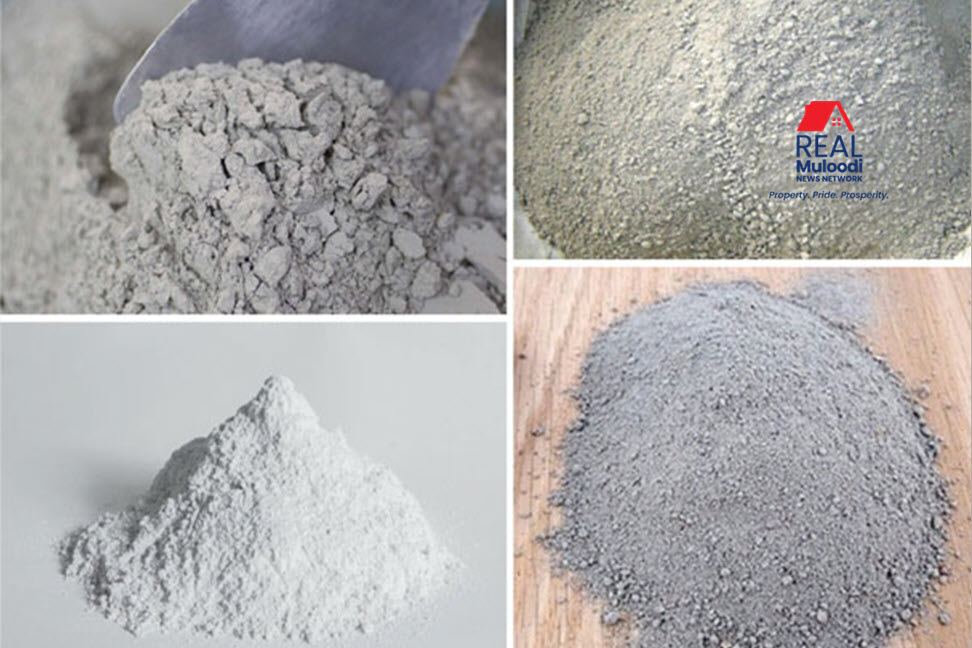UGANDA, Kampala | Real Muloodi News | It’s essential to know the basics about cement and its types, particularly when you’re planning a construction project.
Cement is one of the most fundamental elements in the construction industry, holding together buildings, bridges, dams, roads and many other structures.
Despite being one of the primary construction materials, cement is often overlooked until something goes wrong, yet it is a chemical substance that sets, hardens and bonds materials together to form sturdy structures because it is produced by grinding and mixing burnished limestone and clay.
This makes it a durable yet comparatively cheaper material, weather-resistant and can be used in at least one stage of most structures, including foundations, floors, beams, columns, interior or exterior walls, ceilings and even roofs.
In this article, we will discuss cement types, their uses, and how to choose the right cement for your construction project.
Types of Cement
Several types of cement can be used for different purposes which include:
Rapid-Set Cement
Rapid-set cement is designed mainly for use in the manufacture of precast concrete products such as building blocks, paving blocks, fencing poles, culverts, road kerbs, pre-fabricated concrete slabs, and many more.
It is a rapid-hardening cement that sets and hardens faster than ordinary cement and hardens within an hour. This cement type allows for the removal of formworks shortly after casting so that they can be used again.
It is used for patching up work and repair jobs, and for projects that require quick completion.
It is packaged in a dust-free hybrid bag and brings extra value in the form of strength, speed, quality, and low cost.
Waterproof or Hydrophobic Cement
This cement type contains a water-repellent agent or film-forming substance and is suitable for use in underwater constructions such as bridges and dams, and other water-logged applications.
It is used to reduce the rate of structural deterioration due to moisture exposure.
Normal Binder Cement
Normal binder cement is the most common type of cement used in the construction industry.
It is readily available on the market and is used in normal construction works that require no special application of cement.
Ordinary Portland Cement
The most commonly available cement on the market in Uganda is Ordinary Portland cement (OPC). It is suitable for all general construction needs and is made from primary cement materials, limestone with clay.
It is called ‘Portland’ because when it was first made and used in the early 19th century in England, it resembled a building stone from the Isle of Portland off the British coast.
Pozzolana Cement
This kind is prepared by grinding pozzolanic clinker with Portland cement. It is also produced by mixing pozzolana with gypsum or calcium sulfate or by intimately and uniformly blending Portland cement and fine pozzolana.
It is not only extremely water-resistant but also resistant to several other chemicals, making it suitable for underwater construction, waterlogged foundations, and slabs for flat-roofed houses.
It is also used in marine structures, sewage works, and for laying concrete underwater in construction works such as bridges, piers, dams, etc.
Pozzolana is also used in masonry mortars and plastering as it gives a better surface finish.
Low-heat Cement
This type of cement generates less heat during the hydration process, which is the chemical reaction between the cement and water that causes the cement to set and harden.
It is ideal for massive concrete structures that require a long curing time to prevent cracking, such as dams, foundations, and large buildings. It is also used in concrete pavements and bridges.
White Cement
White cement is a specialised cement that is used for decorative purposes and architectural finishes. It is produced by using iron and manganese oxides along with raw materials like limestone, clay, and sand.
It is known for its high degree of whiteness, brightness, and texture. It is used for the construction of buildings, sculptures, and other decorative items.
Blended Cement
Blended cement is a mixture of Portland cement and other materials like pozzolana, fly ash, and slag. These materials are added to the Portland cement to improve its properties, such as durability, strength, and resistance to chemicals and environmental factors.
Blended cement is used in construction projects that require specific properties such as high strength, low permeability, and corrosion resistance.
Choosing the Right Cement
Choosing the right cement is essential for the success of any construction project. The type of cement used will depend on the specific requirements of the project, such as the type of structure being built, the location of the structure, and the environmental conditions in the area.
Some factors to consider when choosing the right cement include:
Strength
The strength of the cement is one of the most important factors to consider when choosing the right cement for a construction project. It determines the load-bearing capacity of the structure and its ability to withstand external forces like wind, water, and earthquakes.
Durability
The durability of the cement determines its ability to resist wear and tear, chemical damage, and weathering.
Workability
The workability of the cement is a measure of how easy it is to mix, place, and compact and it determines the ease and efficiency of the construction process.
Cost
The cost of the cement will depend on the type of cement, quality, quantity, and the location of the project.
READ MORE LIKE THIS:
Recycled Concrete Aggregate to Combat Uganda’s Cost of Cement Crisis
Cement Prices Rise as Factory Operations are Hindered by Severe Blackouts



